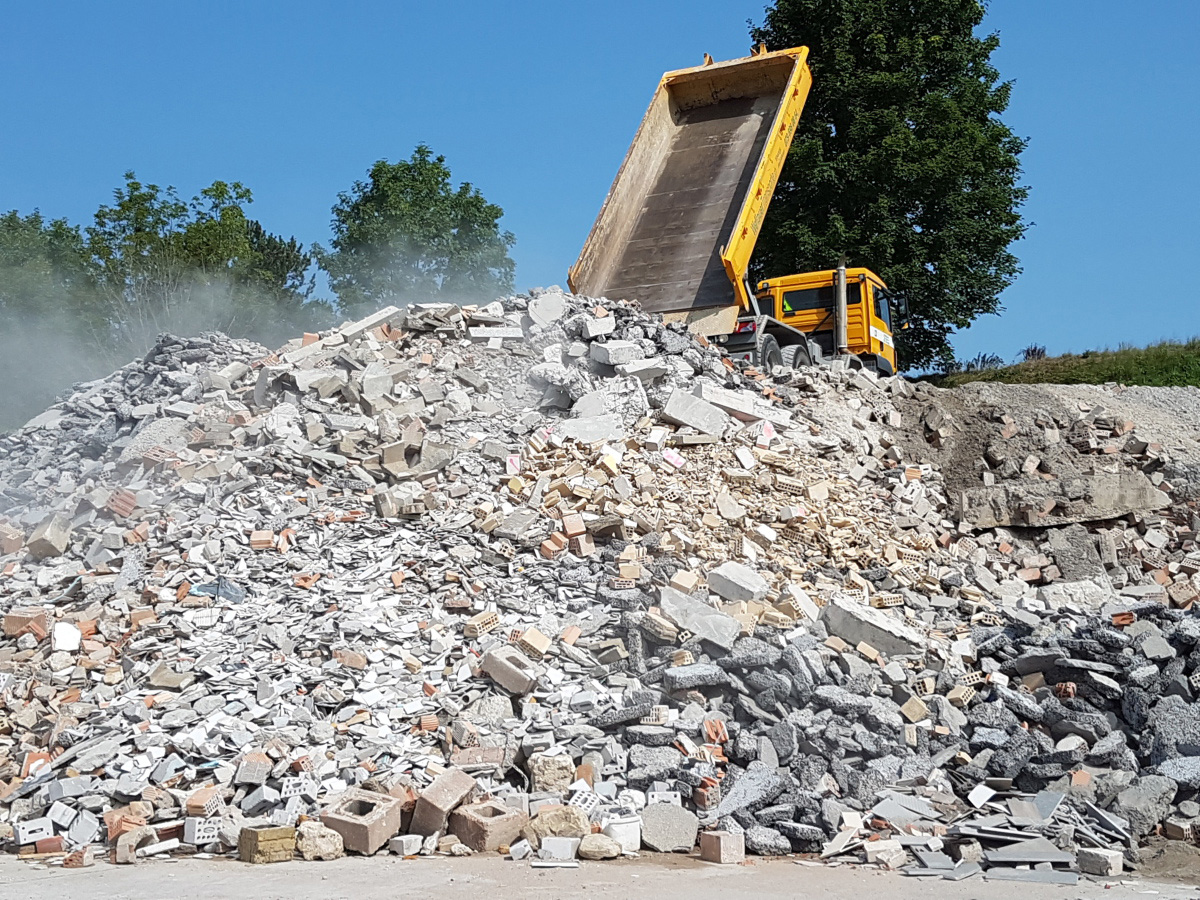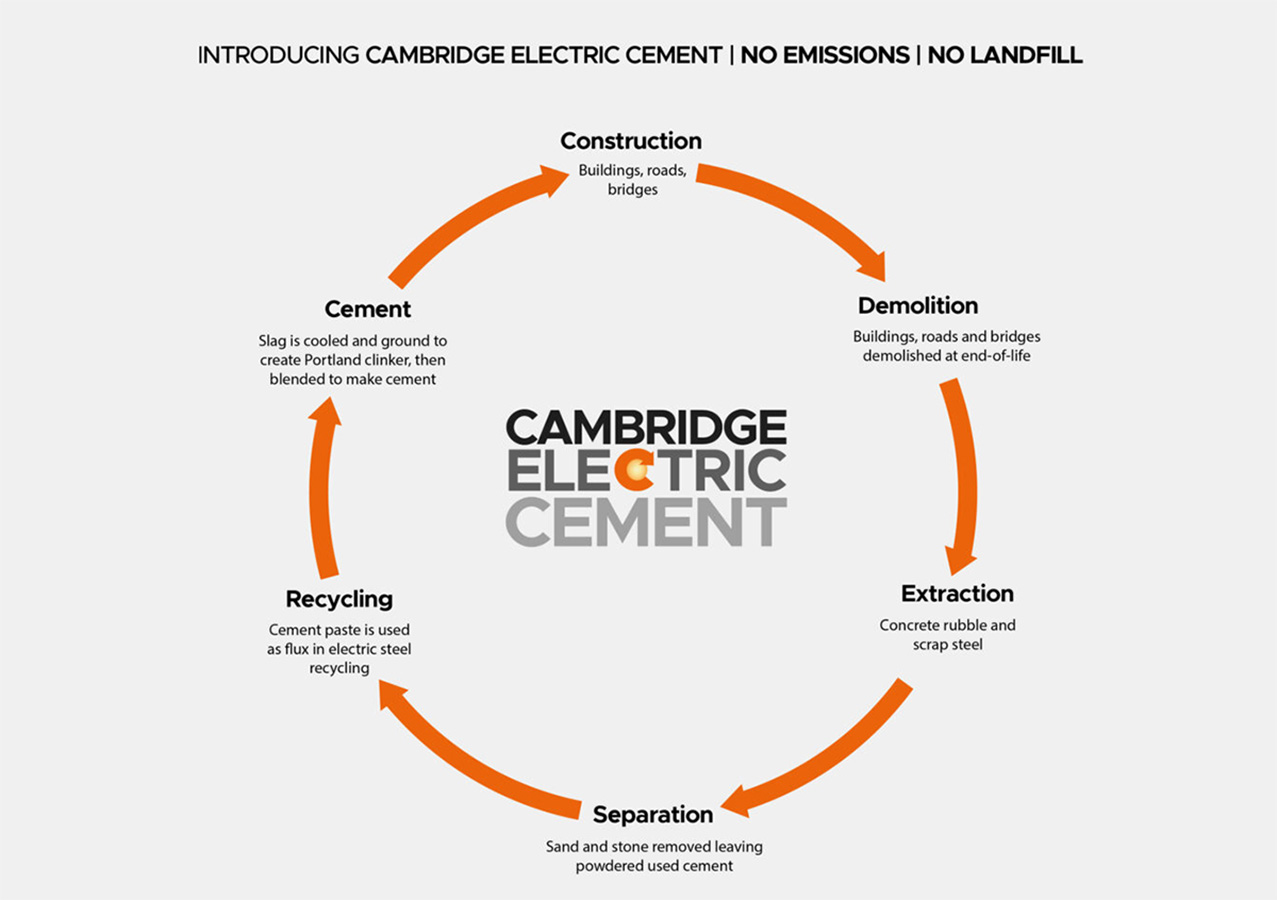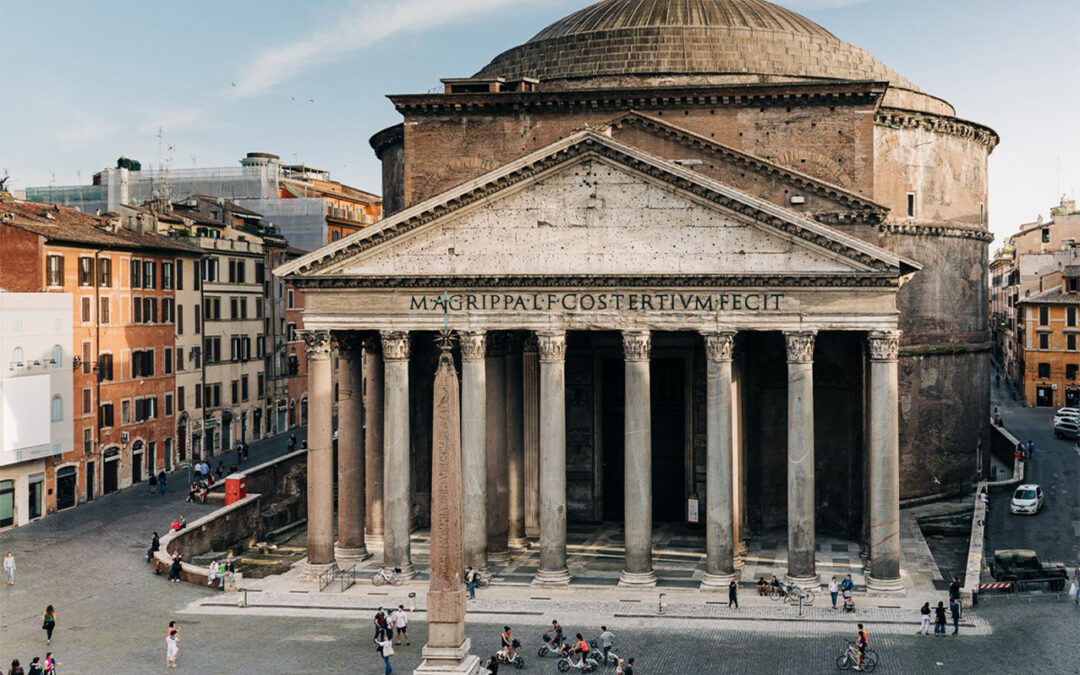Pantheon In Rome, Italy 128 AD
Steel-reinforced concrete is the means by which most tall buildings are constructed today. It pairs the compressive strength of concrete with the tensile strength of steel to make an incredibly structurally efficient hybrid composite and has thereby completely revolutionized the way humans around the planet build. However, the production of both concrete and steel has also severely impacted accelerating global warming as the manufacture of both materials has been very energy intensive and therefore caused enormous CO2 production.
The history of reinforced concrete is the history of human innovation and progress, but it is also the history of environmental challenges and climate change. The development of reinforced concrete has been historically intertwined with the complex environmental impact of this ubiquitous building material. The earliest examples of concrete date back to Israel in 7000 BC where natural deposits of material occurred from the natural firing of limestone and oil shale together. This dry dusty material hardened into a strong solid material when mixed with water, by undergoing the process of hydrolysis. While the chemistry of this is now well understood, early on the creation of this important component of concrete must have seemed like alchemy. The Romans were the first to use Pozzolanic Ashto perfect the use of concrete technology in a widespread way but largely just in compressive mode like it was a form of formable natural stone. The Roman Pantheon was built of unreinforced Roman Concrete in 128 AD and still stands to this day as a shining early example of the remarkable durability of Roman Cement.

Steel Reinforce Concrete
The history of reinforced concrete was advanced considerably in 1854 with a patent by English builder William Wilkinson. Recognizing the inherent weakness of concrete in tension, Wilkinson introduced iron bars where the material would experience tension, creating a composite material with exceptional strength. This innovation opened avenues for ambitious architectural endeavors. Previously unimaginable structures, like ultra-tall skyscrapers and expansive bridges, would become achievable as a result of this innovation.
The 20th century witnessed the widespread adoption of reinforced concrete. Pioneering engineers like Joseph Monier and François Hennebique refined the technique, paving the way for iconic structures like the Pantheon in Paris and the Hoover Dam in the United States. The material’s versatility, affordability, and fire resistance made it a perfect fit for the rapidly growing urban skyline.

Hoover Dam Spanning the Arizona- Nevada Border
However, the environmental cost of this revolution is undeniable. Cement, a key ingredient in concrete, is the major culprit. Its production releases significant amounts of carbon dioxide, a potent greenhouse gas. Estimates suggest concrete contributes to 7.5% of global CO2 emissions. Additionally, the extraction of raw materials like sand and limestone disrupts ecosystems and depletes natural resources.
The environmental impact extends beyond production. Steel manufacturing, another element of reinforced concrete, also has a substantial carbon footprint. Furthermore, demolition of concrete structures generates dust and debris, potentially contaminating soil and air. Disposing of demolished concrete also presents a challenge, as landfills are reaching capacity.
Despite these concerns, the construction industry has not been without solutions. Utilizing recycled materials in concrete production and exploring alternative, lower-carbon cement has been a promising approach. Additionally, optimizing designs to minimize material use and implementing efficient construction practices, has further reduced its environmental footprint.

Recycled Concrete
This past month researchers from the University of Cambridge have made an exciting announcement about the joint recycling of concrete and steel. In the past, concrete was difficult if not impossible to recycle except as aggregate. Now, the engineering team at the University of Cambridge has developed a new method for recycling cement, which could significantly reduce CO2 emissions from both concrete and steel production. The researchers developed a method to recycle cement in electric arc furnaces typically used for steel production. Using the recycled cent in place of the slag waste used in the past allows the old cement to become “clinker,” the reactive base material for cement, again for the first time This discovery could significantly reduce CO2 emissions from both concrete and steel production. The researchers believe this method could be scaled up to produce a quarter of the world’s cement by 2050. However, the researchers also called for a reduction in overall concrete use in the interim as it is so damaging to the environment using the current approaches to manufacturing the material.

Cambridge Electric Cement Process
The future of steel-reinforced concrete lies in using this construction technology in the most efficient way possible to minimize its effect on global warming. While its undeniable advantages in strength, durability, and affordability cannot be ignored, the industry must acknowledge and address the environmental impact by adopting more sustainable approaches as quickly as possible. By embracing sustainable practices and fostering innovation, mankind can continue to build with this revolutionary material while safeguarding our planet for generations to come.
Ross Cann, RA, AIA, LEED AP, is an author, historian, teacher and practicing architect living and working in Newport, RI. He studied Molecular Biophysics at Yale, and holds degrees in Architectural History and Architecture Design from Cambridge University in England, and Columbia University in New York.
